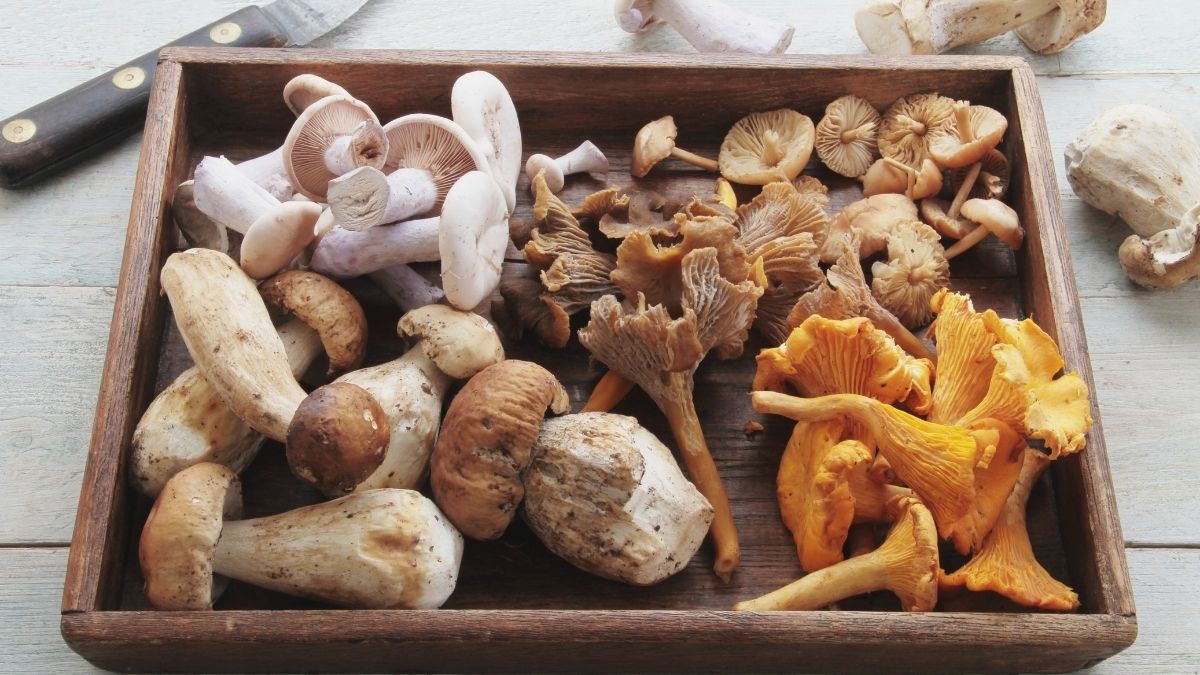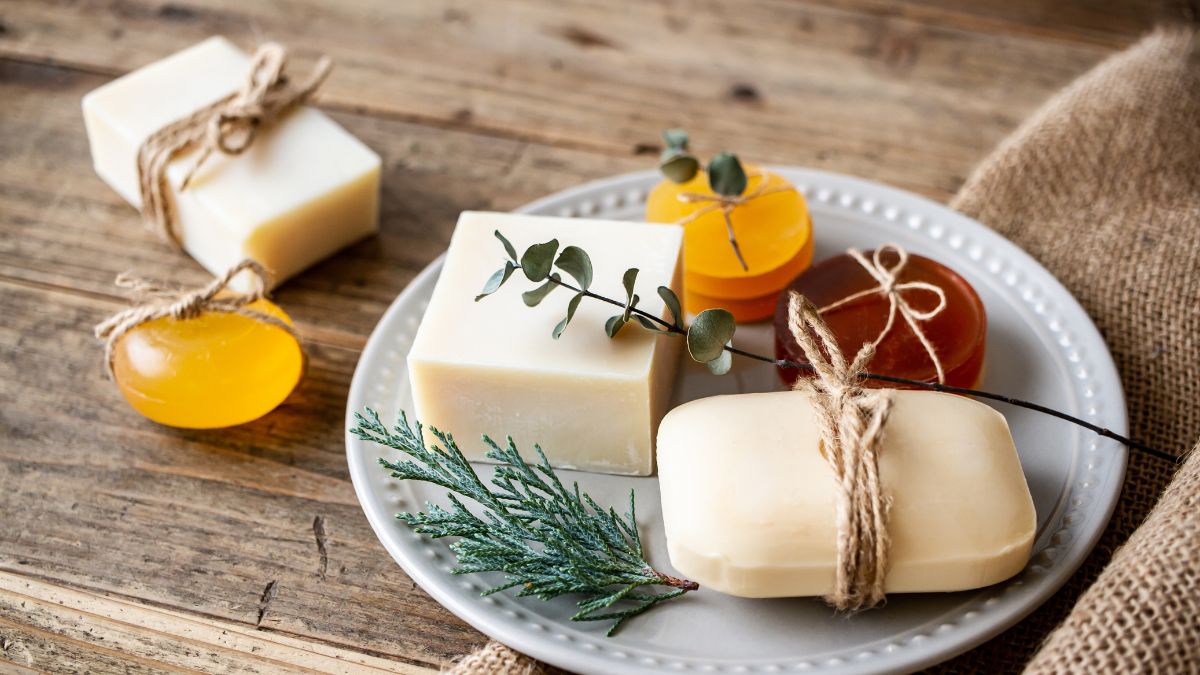Answer: Yes.

Mushrooms are grown organically without the need for any animal byproducts. They fall under the Fungi Kingdom category, and not the Animalia Kingdom.
Mushrooms have been part of my vegan diet. I always have them in my pantry, especially since they make a meal healthy and delicious. Think about sauteed creamy mushrooms with chickpeas!
Mushrooms are healthy fungi that grow on dead wood and organic matter. They don’t have a central nervous system like animals, which makes them vegan-friendly. They’re sustainable and healthier options for making vegan meat. But there are poisonous mushrooms that we will also detail in this topic.
Whether you’ve been vegan or you’re just starting, this article will be very helpful if you’re curious about mushrooms. Let’s start digging.
What Are Mushrooms?
Mushroom, also named toadstool, is derived from the French term mousseron, meaning moss or mousse. Mushrooms can either be edible, unpalatable, or poisonous, which is why those who are mycophagists or mushroom hunters need to study these fungi and how they behave.
Mushrooms have stems, caps, and gills although sometimes, some of them don’t have a stem. They’re the spore-bearing fruiting bodies of fungi that grow either in the ground, on their food source, or on the soil.
The gills that mushrooms have bear microscopic spores that help these plant-like fungi spread across the surfaces where they grow. This is the reason why mushrooms spread and grow rapidly even when they’re not cultivated.
Mushrooms Are Vegan-Friendly
There might be some confusion about whether or not mushrooms are vegan-friendly. There are five kingdoms or categories that living things fall into. These are Animalia, Protista, Fungi, Plantae, and Monera.
Biologists classified mushrooms as part of the Kingdom of Fungi, especially since their characteristics fall into this category. Mushrooms are the same as yeasts and molds, which are used in baking. Both yeasts and molds are also part of the Fungi Kingdom.
But mushrooms have cell walls, a characteristic that animals have. These are made of chitin, which makes up the crustacean shells such as crabs, lobsters, and shrimps.
However, one thing about mushrooms that make them vegan-friendly is that they don’t have a central nervous system. This makes them unable to feel pain when picked or harvested, chopped, or eaten, unlike the animals.
What Are Poisonous Mushrooms?
Mushrooms aren’t easily identified as edible or poisonous because in general, there are no traits to look out for. However, this requires extensive attention to detail for mycophagists, also known as mushroom hunters who feed on mushrooms.
Mycophagists must undergo extensive seminars on how to identify edible and poisonous mushrooms to ensure their safety. One factor that most mushroom hunters look for is brown or tan gills, and not white, among others.
There are around 70 to 80 poisonous mushrooms, but only a few of them are fatal when eaten. These poisonous ones have a very huge resemblance to edible mushrooms, which is why mushroom hunters should learn before hunting.
There are seven deadliest and most poisonous mushrooms that you can find anywhere in the world, mostly in the wild.
- Death Cap
- This is the deadliest among the poisonous mushrooms. It can be found in Europe, and it looks almost exactly the same as straw and caesar’s mushrooms, which are both edible. Its amatoxins can withstand high cooking temperatures.
- This can damage your cells in just 6 to 12 hours from consumption, which leads to the failure of your internal organs, including the kidneys and liver, as well as the central nervous system resulting in coma and death.
- Conocybe Filaris
- This is common in the Pacific Northwest, which appears to be innocent and safe. However, the C. filaris mycotoxins are also high, which can potentially damage your gastrointestinal tracts such as your kidneys and liver.
- Gastrointestinal symptoms usually happen within 6 to 24 hours after consumption, which is often misdiagnosed as food poisoning or stomach flu.
- Webcaps. This has two different species, both look similar as well as to several edible mushrooms. Both of these species have Orellanin, a poison that causes a flu-like symptom, which occurs after 2 days to 3 weeks after consumption. The poison can often lead to kidney failure when left untreated.
- Deadly Webcap
- Fool’s Webcap
- Autumn Skullcap
- This is common in some parts of Australia and in Northern Hemisphere and is often mistaken as a hallucinogenic mushroom. However, this has the same amatoxins as the Death Cap mushroom, which leads to diarrhea and vomiting, liver damage, hypothermia, and even death when untreated.
- Destroying Angel
- These are all-white toxic mushrooms that are very similar to edible ones like button and meadow mushrooms. They’re native to North America. The symptoms like convulsions, delirium, diarrhea and vomiting, liver and kidney damage, and even death, appear after 5 to 24 hours of consumption.
- Podostroma Cornu-Damae
- This is very rare but is native to Asia, which has caused several deaths in Korea and Japan. Its red fruiting bodies possess a poison called trichothecene mycotoxins that lead to multiple organ failures and death.
- The symptoms include peeling skin, stomach pain, hair loss, liver necrosis, low blood pressure, and acute kidney failure.
- Deadly Dapperling
- This is a gilled mushroom, which is common throughout Europe and some parts of Asia. It’s often mistaken as an edible mushroom although poisoning appears to be uncommon. However, when poisoned, this will lead to liver toxicity and even death.
Are Mushrooms Environmentally Friendly?
Vegans decide to follow an organic, natural, and plant-based diet due to ethical, health, or environmental reasons. If you decided to be vegan because you’re aiming for a lower carbon footprint, mushroom consumption has pros and cons.
Wild mushrooms are the most environmentally friendly for harvest and consumption. Since they feed on dead wood and organic matter, this leads to breaking them down resulting in nutrient-rich soil.
Wild mushrooms like morels and truffles play a vital role in the natural ecosystem, making their sustainable harvesting safe for the environment. Since certain mushroom species are nearly impossible to cultivate on farms, allowing them to grow naturally in the wild remains the best option—ensuring environmental balance while enjoying these unique fungi. As we move into 2025, embracing responsible foraging practices helps protect these valuable mushrooms and their habitats for future generations.
However, some farmers grow mushrooms in a farm setting, which involves carbon footprint movements. When growing mushrooms, humidity levels, light, and other farming factors will need electricity to manage their growth.
Growing mushrooms in a farm setting require you to keep them filled with substrate and mycelium to provide moisture, energy, and nutrients to grow freely. To maintain this, plastic bags are widely used, which are not reusable.
The substrate though can be composted, which helps create nutrient-rich soil. This means that the overall environmental impact of mushrooms isn’t massive, and remains very sustainable among other conventional agriculture.
How Healthy Are Mushrooms?
Apart from being sustainable, ethical, and environmentally friendly, mushrooms also provide great health benefits. And of course, they’re a great alternative to real meat. They give the umami flavor that can be tasted in real meat and are widely used in making vegan meat.
Well, the thing is, mushrooms are very healthy, and as long as you don’t indulge in excessive consumption, you’re safe. And you’re even safer if you don’t eat the poisonous ones. Now that’s even better!
The most common edible mushrooms that you can find at your local grocer or supermarkets are the following.
- shiitake
- oyster
- crimini
- portobello
- maitake
- button or white mushroom
- beech
- enoki
So, here are the potential health benefits of mushroom consumption. Aside from being delicious and vegan-friendly, they can do great for your body’s longevity.
- Antioxidants. These protect the body from destroying free radicals, which cause cancer and heart diseases. It also helps boost the immune system and prevents aging.
- Beta Glucan. This is a soluble dietary fiber that is often associated with improved cholesterol, heart-healthy, regulated blood sugar, and it also helps reduce the risk of type 2 diabetes.
- B Vitamins. These protect the heart’s health, are great for red blood cells, good for maintaining healthy skin and digestive system, are healthy for the digestive system, and balances hormones.
- Copper. Mushrooms are also a great source of copper, which helps produce red blood cells responsible for spreading oxygen in the body. This also helps maintain strong bones and nerves.
- Potassium. When you’re low in potassium, your heart and muscles become weak that you may not be able to stand up or walk on your own. Your nerves can also weaken when you lack potassium in the body. So, consuming mushrooms means you’re taking potassium at its best.
The Takeaway
So, are mushrooms vegan? The answer is a big yes! Despite their cell walls that are made of chitin similar to crustacean shells, mushrooms don’t possess a central nervous system.
This means that they are unable to feel pain, and are just as conscious as plants that are suitable for vegans. Mushrooms are also environmentally friendly and extremely healthy for those who consume them for any reason.
However, you will have to ensure your safety if you choose to eat mushrooms especially since there are around 80 species of poisonous mushrooms everywhere in the wild. To be safe, only buy mushrooms from trusted grocers or supermarkets.




